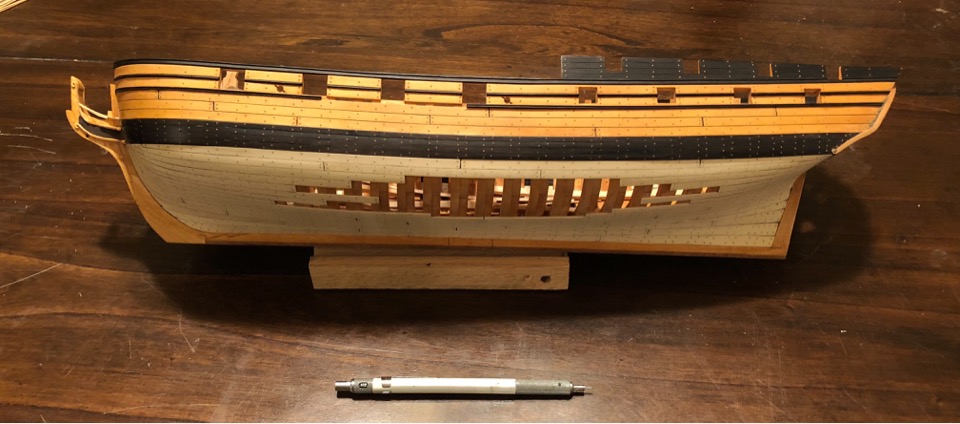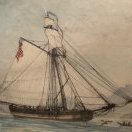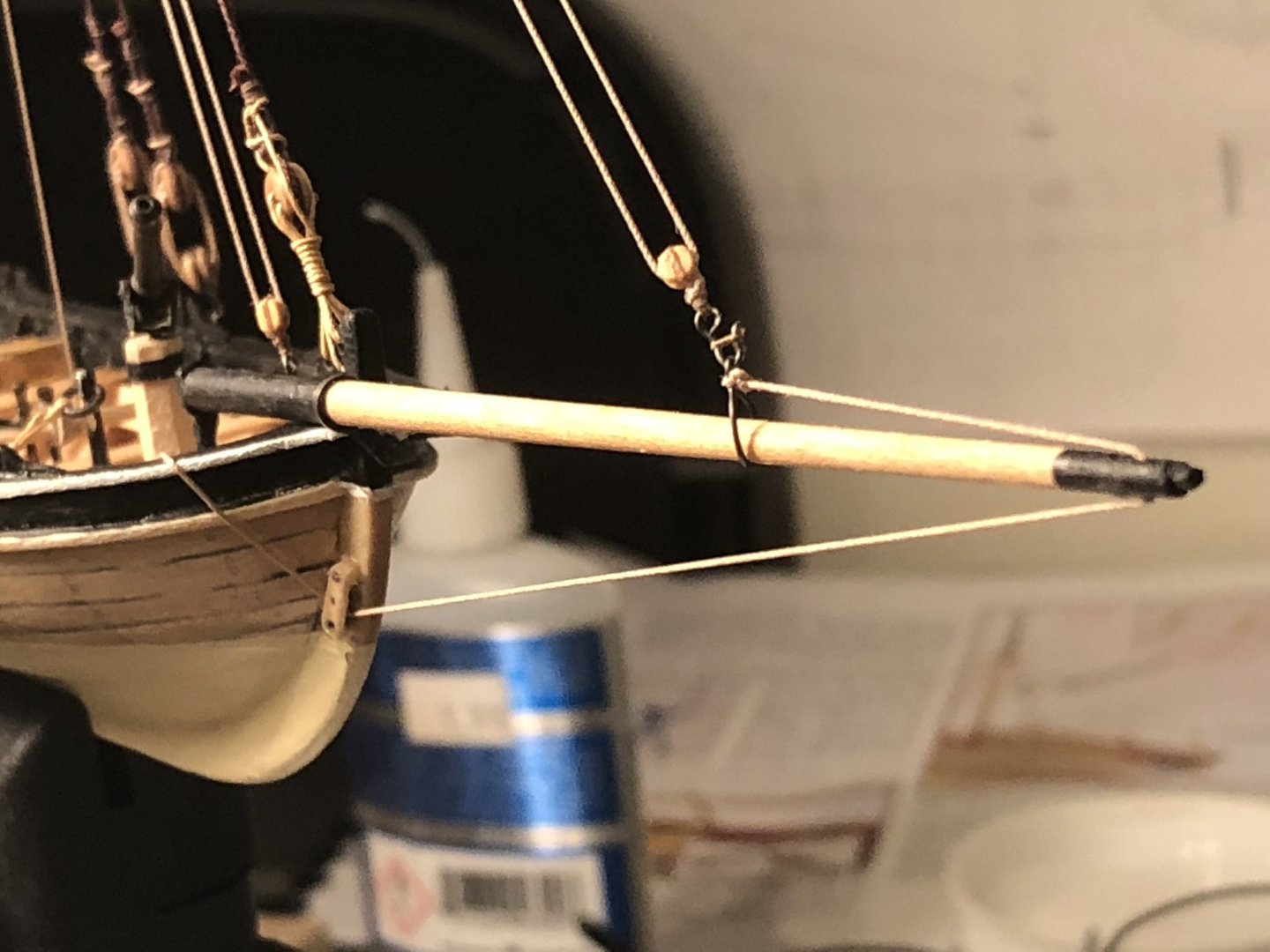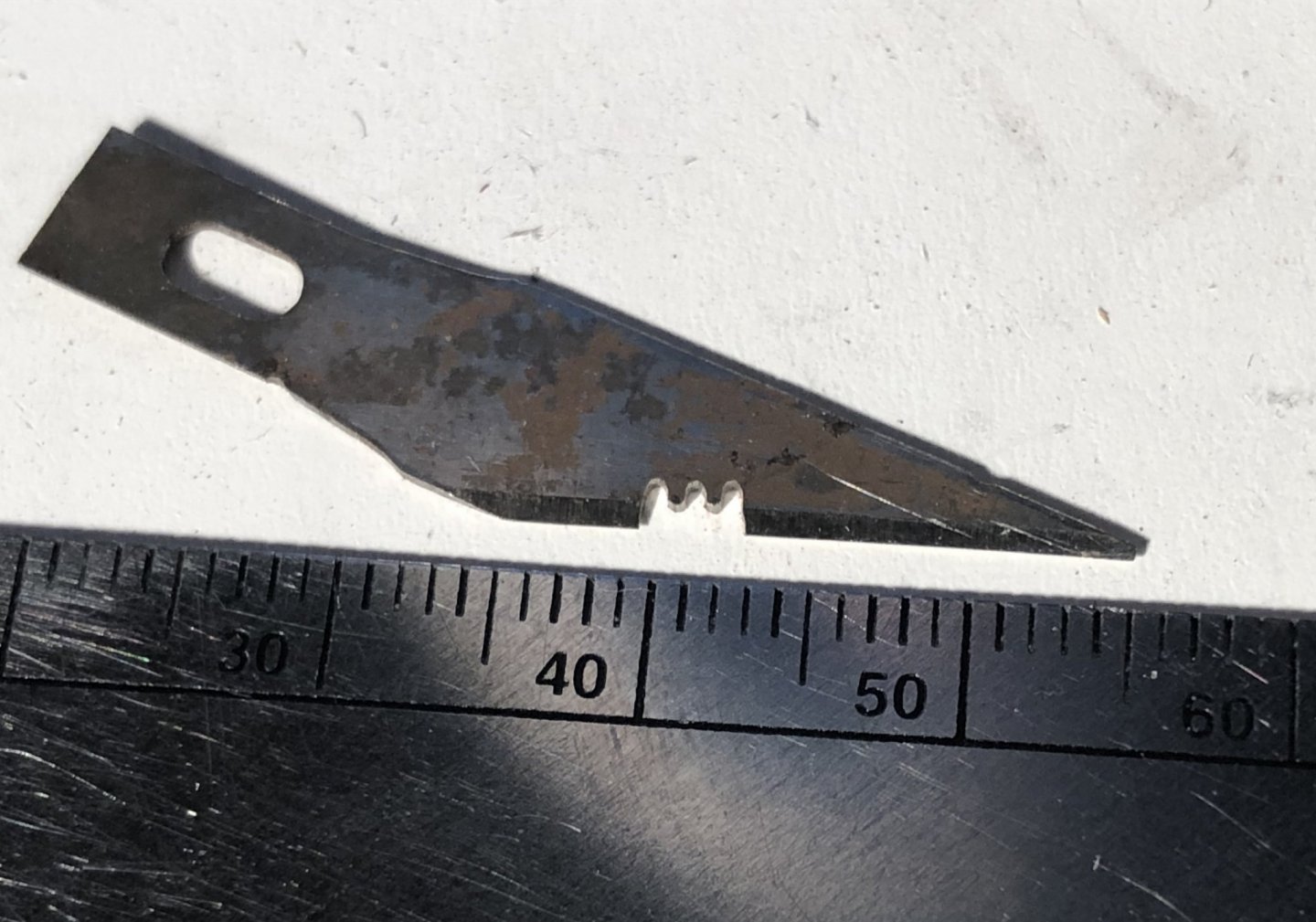-
Posts
359 -
Joined
-
Last visited
Content Type
Profiles
Forums
Gallery
Events
Posts posted by Dowmer
-
-
-
-
Rob, it sounds like you embraced your inner Feng Shui. I'm sure you're room will thank you. Not to mention the room will function better. 😄
-
Johann,
Based on your research, I think you have found your answer. Plate 56 above and the pictures of the contemporary model seem to show it pretty clearly that the "lanyard" reeves or is threaded through like in your experiments and lashed onto itself like you did on your example to the left. You have both published evidence and contemporary model proof for your time period.
-
-
Rob, just thinking out loud, but this exquisite model sitting in front of a window with all the UV light, will it damage it in the long term?
- druxey and popeye the sailor
-
 2
2
-
-
-
-
Well, I’m sure Jack’s will look better, however, considering the originals were carved by hand (not machine) 250 years ago with crude instruments.....I’m still very impressed. Very beautiful.
-
Rob, you have to keep the home fires burning. Sounds like you are taking good care of here. We will be waiting patiently for your GR updates. Have a great Xmas recharge.
-
Chuck, time and again you have tried to replicate the original model. Why not do that here? I like the slate colored roof of the original and is probably period correct.
- Stuntflyer, Elijah, Ryland Craze and 1 other
-
 4
4
-
-
8 hours ago, archjofo said:
Hi Bob,
Thank you very much for pointing out this tiny detail.
Since the hooks are very small, it will be very difficult to do it properly.So I do not know yet if I'll do it.
Johann,Seeing your fine execution of details, I have no doubt you could replicate the mousing. I was noticing the same thing, but Bob was quicker to comment.
Below is my amateurish and feeble attempt at the same scale on a long boat. I’m sure yours would be much better.
cheers
- Archi, paulsutcliffe, aviaamator and 6 others
-
 9
9
-
Joe, one of the things I’ve found that helps me with “cutting” moldings is if you are scraping a 1/16” molding to cut a 1/16” slot into the scraper first. That will channel the strip consistently, then cut the profile into the bottom of the slot. The depth of the slot you cut obviously controls the depth of the profile. I hope that helps.
I typically use an Exacto blade for the scraper. I can then fit it into a handle to use. For cutting I use a thin abrasive cutting wheel in the Dremel then finish with fine Swiss files if needed. There are many ways of accomplishing the task, this is the one that works for me.
Here’s a pic of one I used many years ago.
- JpR62, paulsutcliffe, FrankWouts and 6 others
-
 9
9
-
Mike, one of the questions I always had was, “Do the mouldings sit on top of the planking or do they sit on the frames like the planking?” I’ve seen various contemporary cross sections and they either don’t specify or show them sitting on the frames.
thanks
- Stuntflyer and FrankWouts
-
 2
2
-
-
-
Chuck, have you tried Tung oil on the AYC? I used it and love the warm yellow color.
-
Chuck, I’m sure you’ve answered this before but what do you use for fairing the inboard timbers. Dremel for large removal areas, files, sanding sticks? I know there are lots of different ways but I’d be interested in your technique to get consistent and smooth curves and thickness etc.
thanks
-
-
Thanks for being so open to other possibilities Chuck. I guess it’s a preference thing. I prefer the straight on look but it’s good to know it’s so easily remedied.
BTW, I like the iPhone photos. Pretty good color and saturation, but then I’m not there to see the real colors. Beautiful anyway. 👍
-
26 minutes ago, Chuck said:
I also think they do this on some contemporary models because they are most readily viewed from the side and by turning the head slightly, you can see the face detail better as models are usually displayed. On one side anyway.
Actually, someone else mentioned it before. I only agreed. However, that is water under the proverbial bridge.
I agree with your statement above and probably explains the head turn the best. It is what it is. Either way, it’s a beautiful model and I’m amazed at the quality which far exceeds anything else on the market. So Kudos and keep up the quality and offerings for us meager followers. 😀
- FrankWouts and druxey
-
 2
2
-
Very nice Chuck and Mike. You guys really know how to build an outstanding model.
Chuck, the figurehead looks great and the resin casting is a pretty darn good match. One thing keeps bothering me however. The head of the figure is turned fairly hard to starboard, as if it’s looking at something on that side. Most figureheads Ive ever seen are looking forward. As if they are clearing the way for the ship or looking at the horizon. In one of your original contemporary pictures of the Winnie the head might have a slight angle but nothing as pronounced as this. It just looks a bit weird with the figure looking to the side like that. Just my .02 cents. Still beautiful work but since you have been so meticulous with every other detail I just wanted to point it out.





Here Lies Sirius
in Nautical/Naval History
Posted
Chapman,
There is a build thread of the Sirius from 1810 here on MSW. The builder “Paul” has connections or was part of the excavation and he has pictures of some of the artifacts of the ship in his build.
Heres the link HMS SIRIUS - 1810